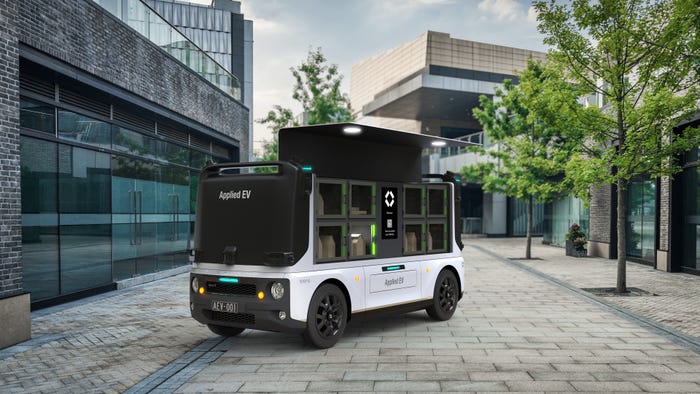Asia IoT: How Asia-Pacific can become the world’s biggest IoT market
The Internet of Things may be mostly nascent in Asia-Pacific, but the growth potential is meteoric for Asia IoT.
September 3, 2017

The Internet of Things is growing exponentially in value as well as size, as regions compete to become the world’s biggest IoT market. The rise of Asia IoT will be no small contributor: IoT uptake in the Asia-Pacific (APAC) region is expected to be meteoric on both fronts.
From 3.1 billion connected devices that year, 2015 saw IDC predict APAC would boast 8.6 billion connected devices by 2020 (vs 29.5 billion globally), bringing its IoT market opportunity to $583 billion (vs $7 trillion globally—although this figure has be revised since). If the region manages to increase its share of the world’s IoT devices at such a rate throughout the next decade, its share of total market value can only increase in tandem.
That’s a meaty share of the global market, and particularly impressive when you consider the nascent nature of Asia IoT currently. Adoption is immature across industries and enterprises. While some investment is there on the vendor side, most prospective end users in APAC direly need an education in how they can apply IoT, as well as examples of others like themselves who have already done so.
[See the 10 steps Asia-Pacific must take to become the world-leading region for IoT.]
Asia’s potential for IoT world domination is clear—IDC expects APAC to be “the frontline for IoT” in four years or less. To achieve this, there are key trends Asia-Pacific will be reliant on that involve the whole ecosystem: industry suppliers, government and the end users themselves.
Move from R&D to real use cases
Most of APAC’s IoT investment so far has come in the form of R&D labs or IoT innovation centers; but on the ground, actual case studies are few and far between.
The same can be said of Europe and North America, particularly on the industrial side, yet companies on these continents like, GE, Bosch and IBM, have taken IoT further. The use cases for enterprises are already going public en masse, and the same is expected of industrial implementations within the next year or two.
So it’s unlikely that the most notable IoT applications will come from APAC over the next 12 months. What APAC does have is abundant local access to cost-effective hardware and software, and less legacy technology to shed. By mirroring IoT projects successfully piloted in Europe and beyond, and capitalizing on the cheap technology available, APAC could still become the region with the most industrial and enterprise IoT use cases underway before the decade is done, paving the way to becoming the world’s biggest IoT market.
According to Colin Koh, senior manager of Industrial IoT at LKH Precicon Pre Ltd and speaker at Internet of Things World Asia this October, “the role of world manufacturing — still very much China — and low-cost software — India and the rest [other APAC countries]” will make for a “technology backbone”, perfect for fulfilling Asia’s IoT market requirements.
Cater to consumer appetite
Rapid urbanization and a large millennial population across Asia have led to a high rate of mobile and internet usage in many Asian countries.
If APAC’s private and public sectors concentrate on continuing this trend and cater to the growing demand, Asia’s population will be the best prepared to adopt personal IoT products as they become widespread, and have the greatest appetite for them. And if the consumer demand is there, market growth will rocket.
For some Asian countries, the work is already done. According to GSMA, mobile penetration across APAC should hit 75% by 2020. During this time, 50% of the world’s new mobile subscribers will have come from India and China alone.
Big data, AI and security
Looking forward to the next-generation technologies that will define how IoT is used, there are some standout digital tools that haven’t yet been fully integrated. Jai Thampi, head of IoT solutions APAC at Electrolux and IoT World Asia speaker, is adamant that, by dominating these integrations, Asia-Pacific can become and maintain the world’s leading region for IoT.
“The three areas that Asia should focus on to deliver dramatic gains from IoT market expansion are big data, AI and security,” he said.
“Many companies still do not understand what data to collect and how to derive value from it. Coupling the data with cognitive capabilities will allow companies to deliver personalized experiences and targeted services to their customers, while opening up new monetization models. The same applies to the industrial world where AI and big data can deliver significant productivity gains.”
Lead in cybersecurity
The world’s biggest IoT market will need the world’s best cybersecurity. FireEye has found that APAC organizations are already 35% more likely to be targeted by cyberattacks than the rest of the world.
“The success of it all will rely heavily on security, as rapid adoption of technology and mobility will outpace availability of adequate cybersecurity defense mechanisms,” Thampi claimed. “Long-term IoT growth is dependent on the ability to transact securely, keep the data secure, and maintain privacy and data integrity. Strengthening policies around data security will be a big part of how to address this.”
Internet of Things World Asia is Asia’s premier IoT event, delivering enterprise case studies from industry leaders and early adopters in IoT. Get your ticket now.
About the Author
You May Also Like








